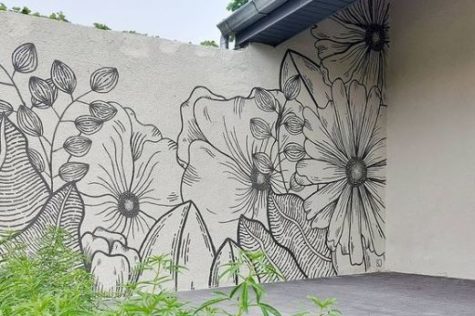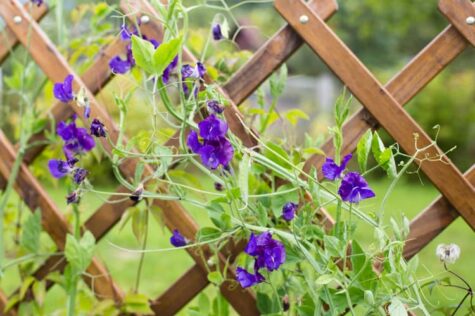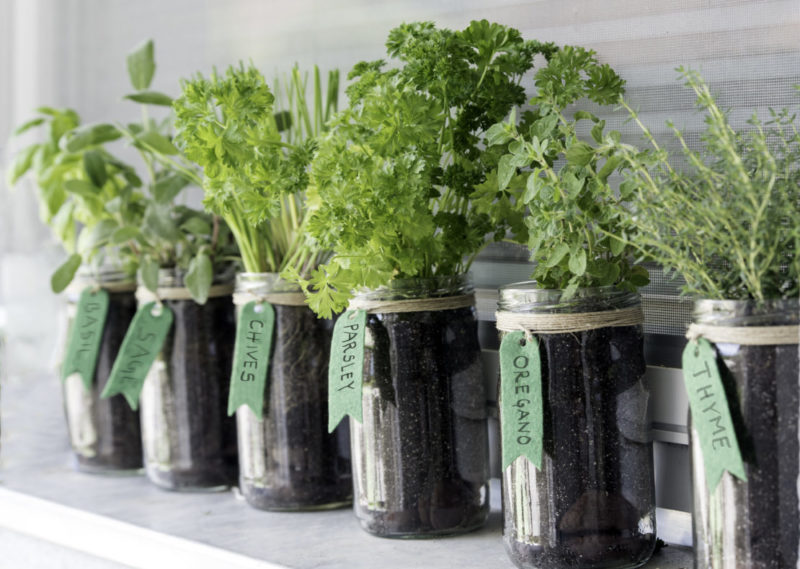Looking for new ways to bring plants into your living space? A bit of greenery instantly makes a living room more welcoming, offices more vibrant and kitchens more cosy. If you’ve already taken a look at our indoor plants guide and decided you want something more unusual, building a terrarium might be right up your street. Take a look at these terrarium garden ideas and tips for creating and caring for a miniature garden behind glass.

Geometric glass terrariums are very in-style at the moment, with the angular shapes complementing the spines of the succulents inside. In winter, it’s fine to have a terrarium on a windowsill, but in bright summer sun, you’d want to move it out of such direct light.
What is a terrarium?
Terrariums (or terraria) are simply glass containers designed to display plants in an interesting way. Sometimes they’re open to the atmosphere, but often they’re completely sealed with a removable lid for maintenance.
A terrarium is generally used as a decorative feature, but sealed terrariums can also be used for growing plants that need a warmer, more humid climate than the average British home. This is partly because warmth captured inside the terrarium helps water from the soil and plants evaporate and condense on the glass, creating humidity and a constant supply of moisture.

Sealed terrariums can be as simple as a glass jar with an air-tight lid. Be resourceful!
Do terrariums need air?
All plants need air, but in a sealed terrarium, plants will recycle the air that’s inside. It’s fine to lift the lid and allow fresh air in during cleaning or maintenance, but you don’t need to do it routinely or install a vent.
How long will a terrarium last?
With the proper care and a balanced environment, a terrarium can last indefinitely. Make sure you’re choosing the right combination of plants, soil and moisture to help your terrarium thrive.

Photo by @atelier_boisjoli. With terrariums, the more the merrier! Having a cluster of several terrariums allows you to grow a variety of plants all at cute, miniature sizes! I like the unusual hanging display for them, too.
What is charcoal for in terrariums?
If you have already started looking into terrarium garden ideas, you may have noticed that sealed terrariums sometimes feature charcoal. Charcoal acts as a kind of sponge for airborne impurities and odours inside the terrarium. It’s not an essential requirement, but charcoal can help your plants stay healthy and keep the container smelling pleasant.
You don’t need any special kind of charcoal – even lumpwood charcoal for barbecues is fine!

It looks like there is some charcoal mixed into the top layer of soil in these closed terrariums. Regardless, seeing the different strata of gravel and compost is a nice effect.
What’s the difference between open and closed terrariums?
As we’ve mentioned, terrarium garden ideas fall into two categories: open and closed. Let’s look at them in more detail.
Straight off the bat, an open terrarium is nearly always the less specialised, lower-maintenance option. They’re only really suitable for plants that can survive in similar conditions to the local environment, although you can obviously control the amount of water involved.
So, an open terrarium is best for plants that can handle a temperate or dry climate. Anything that needs dry soil or direct sunlight (closed terrariums can get too hot in direct light), will probably fare best in an open terrarium.

Here’s some inspiration for decorative rocks inside an open terrarium filled with succulents and cacti.
Closed terrariums give you more control over the temperature and humidity in the tank, allowing you to grow more tropical plants. Ferns, orchids and many air plants will be happier in a closed, or sealed, terrarium. You can also cultivate moss in these settings.
In a closed terrarium, plants will create their own mini water cycle, reducing the need for watering. However, you’ll still need to keep an eye on moisture levels, especially as the seasons change or when you introduce or remove different plants.
Excess water will cause harmful mould to grow (open the hatch and let some escape), while wilting plants means that you need to spray a bit extra into the tank. You’ll also need to use a special soil mix that’s designed to minimise the growth of harmful microbes.
Terrarium garden ideas: How to create a terrarium for succulents
Cacti and succulents are great for a starter terrarium, as they look really impressive and at the same time don’t need much maintenance. As long as you set them up properly, you can have a beautiful, living ornament in your home.
What you need to build a DIY succulent terrarium:
- A large glass container. This will be your terrarium, so choose carefully. It will need to sit somewhere within a metre or two of a sunny window.
- Hydroleca (clay pebbles) to absorb excess water – don’t skip this!
- Gravel and small stones
- Potting compost for cacti and succulents. They require fewer nutrients and better drainage than regular potting compost.
- Your selection of small cacti and succulents.

Succulents can be grown in a terrarium, but it’s essential that you don’t over-water them.
Setting up the terrarium terrain
In our post about indoor plants, we stressed the importance of having drainage in your pots and containers. With a terrarium, you won’t have a hole in the bottom for water to escape, so you’ll need to compensate with levels of soil.
Start with a thick layer of hydroleca, filling up about a third of your glass container with clay pebbles. This will absorb water and keep it away from the plant roots (which will rot if they sit in moisture).
Next, add your compost. As we mentioned, succulents and cacti thrive best in soil that’s well-draining without too many nutrients (imagine the dirt they’d be growing in in the desert). Choosing a specific succulent and cacti compost will help to prevent overwatering. Fill another third of your glass bowl with this compost, keeping it loosely packed to allow air pockets.

Photo by @plantrebelz. I love this unusual jar – perfect for an earthy, sealed terrarium
Making your terrarium pretty
At this stage, you should start thinking about what you want your terrarium to look like. Terrarium garden ideas often include miniature landscaping features, like tiny pathways, bridges or rock formations. You could arrange your terrarium into two halves, or in a semi circle – be as creative as you want!
When picking your plants, consider their size, shapes and colours. For example, you might want several plants of the same type to contrast against one or two more unusual cacti or succulents. Think about whether you want lots of colours, or a limited palette.

Photo by @unpetitappardanslaprairie. The miniature steps make the tiny leafy plants look like scaled down trees and bushes.
Getting your plants settled
When you‘re preparing to put your plants into their new home, you’ll need to take them out of whatever pots they’re currently in. Gently hold the plant (you might want gardening gloves if it’s a cactus!) and carefully invert the pot. You won’t need to turn it completely upside-down, but a lower angle will help you tease the plant out.
Once it’s out, you’ll want to shake off any loose soil, and give the roots a little rub to separate them if they’re clumped – but be gentle! Next, dig a well in your soil, and pop the plant in, re-covering all visible roots with compost (try using a delicate tool to do this around the base of spiky plants).
Repeat this process until you’re happy with the way all of your succulents and cacti are arranged.

Photo by @theframeterrariums. Even one larger rock can make an interesting visual impact in a terrarium.
Finishing touches
When all your plants are home, you can add your decorative pieces. Start with the fine gravel and stones, which will look much prettier than the compost. Larger stones can create a beautiful, organic backdrop or interesting centrepiece.
Caring for a succulent terrarium
Once your terrarium is planted you’ll want to give each plant a bit of water to get them settled. After that, your succulents and cacti will only need watering about once a month (even less in winter).
If dirt or sand splashes up onto your plants, you can use a small paintbrush or makeup-type brush to dust it off.

Terrarium Care Tips
Like we’ve said, a properly-balanced terrarium can keep ticking for a really long time – years. However, you will need to navigate a few rookie mistakes in order to help your glass garden thrive. Here are the most common problems that cause terrarium gardens to perish.
- Over watering. The number one issue with terrariums is too much water. Remember that open terrariums are usually for desert-dwelling plants and sealed terrariums recycle their water. Stick to occasional spritzes with a spray bottle, and leave off lids/soak up excess with paper towels if you notice a build-up.
- Too much light. Glass will amplify the effect of direct light, so terrariums don’t need to be on a windowsill. In fact, sealed terrariums should be set back, away from the window, as the temperatures inside can climb really really fast and you’ll bake your plants.
- Too little light. Yup, it’s a delicate balance. All plants need at least some light, so if your space is really dark, consider adding a grow light or fluorescent bulb to supplement the daylight.
- Too much heat. Any plant will dry out (and die) if you put it too close to a radiator or heat vent. As soon as you turn the heating on, make sure any of your leafy friends are moved away.
- Poorly-chosen plants. Keep the type of terrarium you have in mind, and pick plants accordingly. Tropical plants will suffer in an open terrarium while succulents and cacti will rot in a sealed one. Check whether a new plant needs humidity, airflow sunlight etc.
- Crowded plants. If the plants in your terrarium start getting overgrown, they’ll block the light for their neighbouring plants. Keep them trimmed (and prune the roots to help them stay small too). If any plant starts looking sickly, you need to quarantine it to keep other plants healthy. Carefully remove it (using tongs, or a long spoon) and replace it with a comparable-but-healthy one.
- Mucky glass. Just like overcrowding, dirty or foggy glass will block light coming in and result in sickly plants. Keep it clean with paper towels, a clean cloth or newspaper. Don’t use any chemical products that could harm your plants!

And that concludes our post on terrariums – at least for today! Do you have any questions that we haven’t answered? Tell us and we’ll give you our tips! And don’t forget to check out our post on how to grow a bottle garden for more ideas like these.

Save this pin for later






